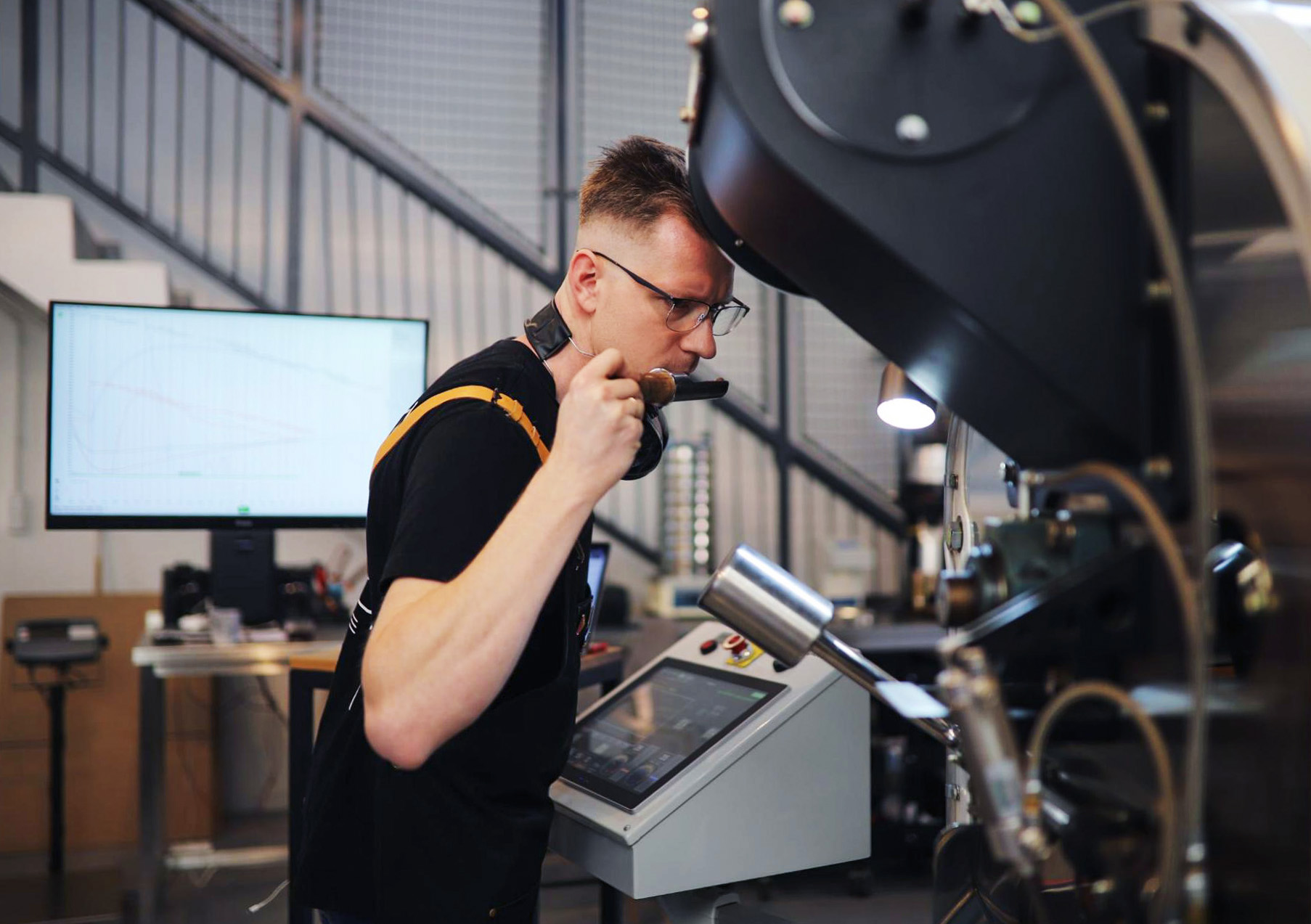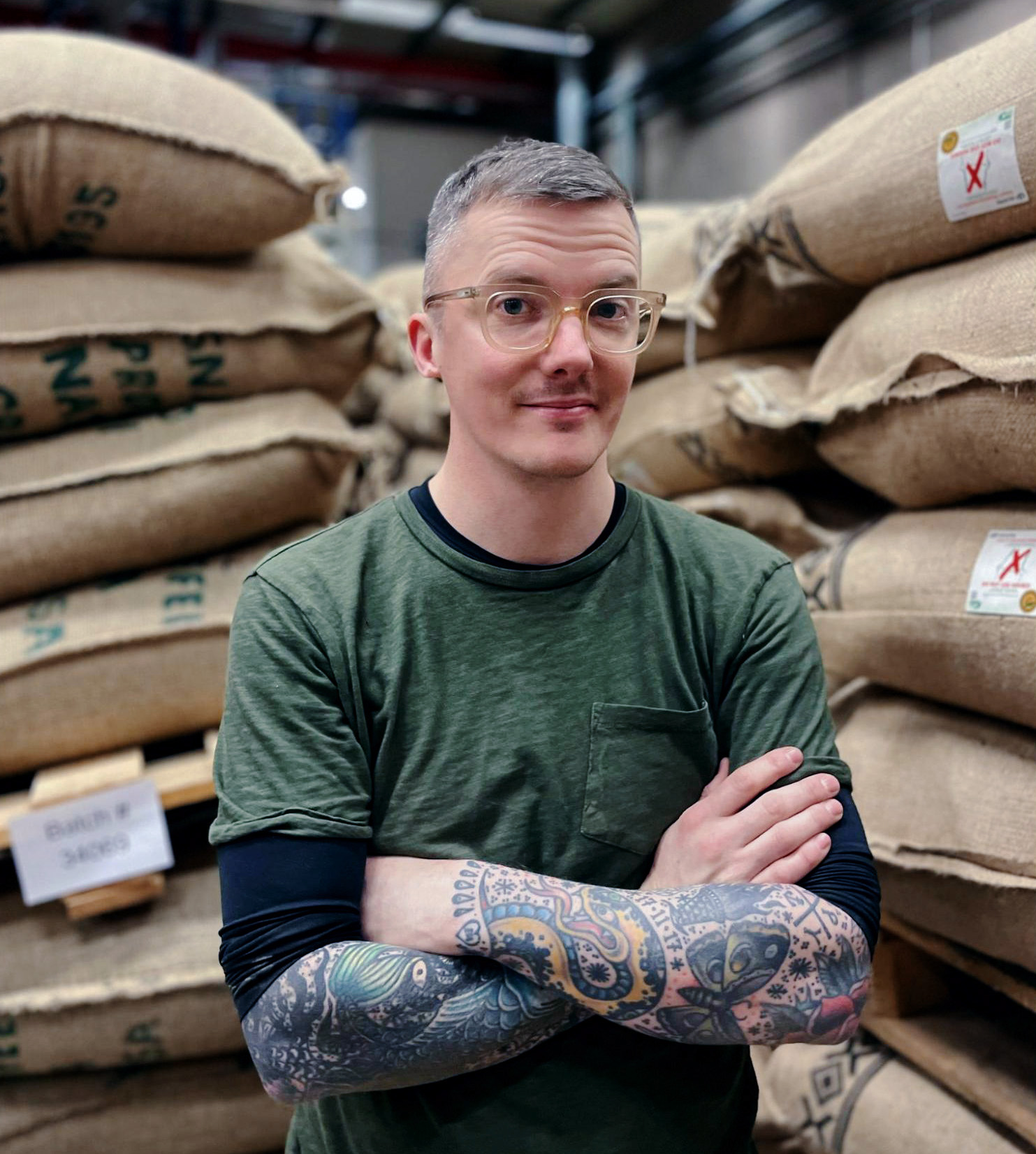Very little scientific data meaningfully compares roasting machine designs, so the best way to understand the differences is practical experience. To learn how the design of their drum roaster affects their roasting style, we asked three prominent roasters about how they work with their machines.
Krzysztof Barabosz is the cofounder and head of coffee at Hard Beans in Opole, Poland. The first roasting machine at Hard Beans was a Giesen W15 — a classic directly heated drum roaster. As the roastery grew, they replaced the Giesen with a Diedrich CR-35 Zenith 2. Diedrich roasters apply direct heat to the drum, but they also share some characteristics with indirectly heated designs.
 Krzysztof Barabosz roasting on the Diedrich CR-35 at Hard Beans.
Krzysztof Barabosz roasting on the Diedrich CR-35 at Hard Beans.
Scott Tedder is the head roaster at Bonanza in Berlin, Germany. He roasts on a vintage van Gülpen G45, the forerunner of the Probat G series of roasters. The machine has been updated with modern controls, but it still contains the original cast-iron drum.
Stephen Houston is the former head roaster for Bailies Coffee Roasters in Belfast, Northern Ireland, where he used both directly heated drum roasters drum roasters (Probat machines UG22, G60, and P5) and an indirectly heated drum roaster (Neptune 500). He recently founded Lucid Coffee Roasters, where he opted for a Diedrich IR-12.
At Bailies, the indirectly heated roaster was ideal for large-scale roasting, Stephen says. ‘The large (120-kilogram) batches wouldn’t have been as well roasted with the direct heat. This type of roasting made matching back-to-back profiles very easy.’
 Stephen Houston in the warehouse at Bailies Coffee Roasters.
Stephen Houston in the warehouse at Bailies Coffee Roasters.
When it came to roasting specialty coffee, he had better results with the classic drum roaster. ‘I always found the design and build of the older, direct-heat roaster to be a better way to achieve the roasts I wanted,’ Stephen says.